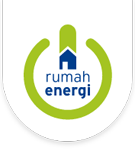If you google image search “Citarum River”, you will find a lot of pictures of immense amounts of trash floating down the river. You would be surprised to find out that this river flows into a Jatiluhur reservoir, which supplies around 80% of Jakarta’s water, and provides irrigation to a vast area of West java agricultural land. Many pollutants play important part in the state of Citarum River. Industrial wastes and household wastes are also dumped in the river. Furthermore, cow dung also becomes one critical part of a complex problem.
So, cleaning up the river is a priority, and is no small task. If the water is of high enough quality it could be drunk, which would reduce the need for Jakartans to buy bottled water, and also reduce all that plastic waste. Perum Jasa Tirta II (PJT II) as the government agent to manage Jatiluhur reservoir, have set an ambitious task to clean Citarum River as their main asset. Especially considering the challenge of balancing improving water quality while maintaining the livelihoods of people who rely on Citarum for waste disposal. Padamukti is a village of about 1000 people 2 hours south of Bandung in West Java, where PJT II and Yayasan Rumah Energi has set up a pilot program aiming to increase water quality of the Citarum River and thereby improving the quality of life for people by the help of worms. But what do worms have to do with improving water quality? Well they are linked in by cow dung.
Cow dung from dairy farmers is thrown into many small rivers and accumulates in Citarum River, where it becomes one of the main pollutants. Cow dung however, can be converted to biogas to provide energy to households. Biogas is the methane produced from the fermentation of cow dung and other organic matter. And biogas is at the center of this pilot program. With a biogas digester waste can be input into the system, mixed with water at a 50/50 ratio and then mixed into the digester. When this ferments, the gas collects in the dome and is fed through tubing into households where it is burned to provide lighting and energy for cooking. This allows households to produce and use their own energy. Getting energy from something that would otherwise be discarded. One of the best parts about biogas is the bio slurry. Bio slurry, also called as brown gold, is the residual output of the system. And surprise surprise, it is a very useful high nutrient content, organic fertilizer. Studies have shown that it can increase the nutrient quality of soil, restoring some of the nutrient erosion that occurs through high intensity farming and synthetic fertilizer use. It also provides farmers with another income stream and makes them less reliant on soil inputs to grow crops. Bio slurry is also used to feed the worms.


The program set up by PJT II and Yayasan Rumah Energi, continuously educates villagers of Padamukti to utilize the bio slurry both for worm farming and organic fertilizer. Opik, is an enterprising 16 year old as an example of a young entrepreneur and future model. He works in his father’s farm, farming nutrient rich worm digested compost. By selling this compost he can earn up to Rp.2.000 000 a month, all the while restoring soil quality and prevent the river from pollution. How many 16 year old’s can say they make money from improving soil quality? At least one in Padamukti. By associating with worms and bio slurry, Opik has managed himself to own a goat which he bought with his own savings from selling Kascing. He also plans to buy his own motorbike in the near future.
How soon until this massive clean-up is achieved? In the last 9 years, over 23 000 bio digesters have been installed across Indonesia by Yayasan Rumah Energi, most of these are in Java and many in Padamukti. Again this is not only removing cattle waste from the system, but also providing households with energy and more income through selling bio slurry and associated products. Can the solution really be that simple? You will have to ask Opik.

